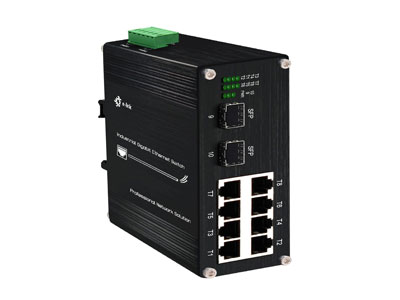Key Takeaway
No, Industrial Ethernet is not a fieldbus, but it serves a similar purpose in industrial automation. Fieldbus is a traditional communication system that connects sensors, actuators, and controllers in a network. It uses serial communication and is designed for specific protocols like PROFIBUS or Modbus.
Industrial Ethernet, on the other hand, is based on Ethernet technology and supports faster speeds, larger networks, and real-time communication. Unlike fieldbus, Industrial Ethernet is more flexible and integrates easily with modern technologies like IoT and Industry 4.0. While fieldbus is suitable for small, dedicated systems, Industrial Ethernet is better for complex, scalable networks.
Key Differences Between Industrial Ethernet and Fieldbus Systems
The primary difference lies in the technology and performance.
Fieldbus systems are older and rely on serial communication to link devices like sensors, actuators, and controllers. These systems work well for small-scale automation but struggle with complex and data-intensive operations.
Industrial Ethernet, however, is based on Ethernet standards, providing faster speeds (up to 1 Gbps) and greater scalability. Unlike Fieldbus, which requires dedicated wiring for each device, Industrial Ethernet uses a networked approach where multiple devices can connect over a single infrastructure.
Additionally, Industrial Ethernet supports real-time communication protocols like PROFINET and EtherNet/IP, enabling precise control and monitoring in advanced applications. While Fieldbus remains relevant for certain legacy systems, Industrial Ethernet offers a more robust and future-ready solution.

How Industrial Ethernet Modernized Industrial Communication
Industrial Ethernet revolutionized industrial networks by addressing the limitations of traditional Fieldbus systems. Its high-speed communication enables faster and more efficient data exchange, which is crucial for modern automation and Industry 4.0 applications.
One major improvement is its ability to support large networks. Fieldbus systems are typically limited to a small number of devices, while Industrial Ethernet can accommodate hundreds or even thousands of devices in a single network.
Moreover, Industrial Ethernet integrates seamlessly with IoT and cloud technologies, allowing industries to leverage real-time analytics and remote monitoring. This modernization has made Industrial Ethernet the backbone of smart manufacturing, enabling advanced technologies like predictive maintenance and AI-driven automation.
Advantages of Industrial Ethernet Over Traditional Fieldbus
Advantages of Industrial Ethernet Over Traditional Fieldbus
When Fieldbus is Still Relevant in Industrial Networks
Despite its limitations, Fieldbus systems remain relevant in certain scenarios, particularly in industries with established legacy networks. For smaller operations or specific applications, Fieldbus provides a cost-effective and reliable solution.
Fieldbus is also preferred in environments where simplicity and stability are prioritized over speed and scalability. For example, water treatment plants or smaller manufacturing units often use Fieldbus for tasks like motor control and temperature monitoring.
Furthermore, industries with stringent environmental requirements sometimes favor Fieldbus due to its proven reliability in stable conditions. While it lacks the advanced features of Industrial Ethernet, Fieldbus continues to play a vital role in maintaining legacy systems and supporting smaller-scale networks.
Integration of Fieldbus ProtocolsWith Industrial Ethernet
One of the strengths of Industrial Ethernet is its ability to integrate with Fieldbus systems, ensuring a smooth transition for industries upgrading their networks. Gateways and converters allow Fieldbus devices to communicate with Ethernet-based systems, bridging the gap between old and new technologies.
For example, a plant using PROFIBUS can gradually migrate to PROFINET, a protocol built on Industrial Ethernet. This hybrid approach minimizes downtime and reduces the need for immediate hardware replacement.
By supporting both Fieldbus and Ethernet protocols, industrial networks can achieve the best of both worlds—leveraging the stability of Fieldbus for legacy applications while adopting Ethernet for modern, high-speed operations.
Conclusion
While Industrial Ethernet is not a Fieldbus system, the two technologies often complement each other in industrial networks. Industrial Ethernet excels in speed, scalability, and integration, making it the preferred choice for modern applications. Fieldbus, on the other hand, remains valuable for legacy systems and specific use cases.
By understanding their differences and strengths, industries can design hybrid networks that balance cost, performance, and reliability. Together, Industrial Ethernet and Fieldbus provide a flexible foundation for current and future automation needs.
